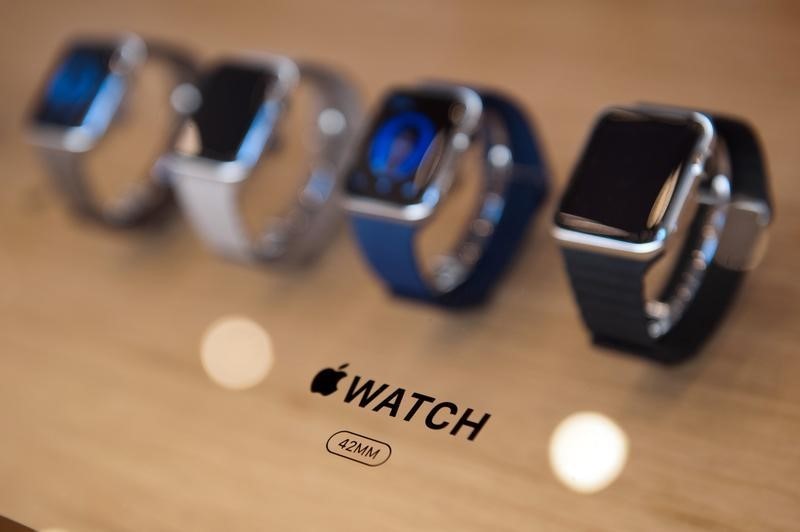Benzinga - by Benzinga Insights, Benzinga Staff Writer.
In the dynamic and cutthroat world of business, conducting thorough company analysis is essential for investors and industry experts. In this article, we will undertake a comprehensive industry comparison, evaluating Apple (NASDAQ:AAPL) and its primary competitors in the Technology Hardware, Storage & Peripherals industry. By closely examining key financial metrics, market position, and growth prospects, our aim is to provide valuable insights for investors and shed light on company's performance within the industry.
Apple Background Apple is among the largest companies in the world, with a broad portfolio of hardware and software products targeted at consumers and businesses. Apple's iPhone makes up a majority of the firm sales, and Apple's other products like Mac, iPad, and Watch are designed around the iPhone as the focal point of an expansive software ecosystem. Apple has progressively worked to add new applications, like streaming video, subscription bundles, and augmented reality. The firm designs its own software and semiconductors while working with subcontractors like Foxconn and TSMC to build its products and chips. Slightly less than half of Apple's sales come directly through its flagship stores, with a majority of sales coming indirectly through partnerships and distribution.
| Apple Inc | 30.90 | 47.41 | 7.81 | 37.5% | $30.65 | $40.43 | -0.72% |
| Hewlett Packard Enterprise Co | 10.74 | 1 | 0.75 | 3.07% | $1.23 | $2.56 | 4.98% |
| NetApp Inc | 27.86 | 24.15 | 3.20 | 28.36% | $0.39 | $1.11 | -6.07% |
| Super Micro Computer Inc | 24.58 | 6.55 | 2.03 | 7.59% | $0.19 | $0.35 | 14.45% |
| Pure Storage Inc | 146.38 | 8.93 | 4.01 | 6.59% | $0.11 | $0.55 | 10.77% |
| Xerox Holdings Corp | 13.21 | 0.62 | 0.31 | 1.46% | $0.14 | $0.54 | -5.65% |
| Corsair Gaming Inc | 118.91 | 2.07 | 0.92 | -0.47% | $0.01 | $0.09 | 16.49% |
| Eastman Kodak Co | 5.43 | 0.31 | 0.29 | 0.0% | $0.02 | $0.05 | -6.92% |
| AstroNova Inc | 119.67 | 1.26 | 0.71 | -1.9% | $-0.0 | $0.01 | 10.12% |
| Transact Technologies Inc | 13.33 | 1.73 | 0.88 | 2.35% | $0.0 | $0.01 | -3.73% |
| Sonim Technologies Inc | 12.67 | 1.42 | 0.31 | 2.35% | $0.0 | $0.01 | 34.49% |
| Average | 49.28 | 4.8 | 1.34 | 4.94% | $0.21 | $0.53 | 6.89% |
th, td { padding: 8px; text-align: left; }
th { background-color: #293a5a; color: #fff; text-align: left; }
tr:nth-child(even) { background-color: #f2f4f8; }
tr:hover { background-color: #e1e4ea; }
td:nth-child(3), td:nth-child(5) { text-align: left; }
.dividend-amount { font-weight: bold; color: #0d6efd; }
.dividend-frequency { font-size: 12px; color: #6c757d; } By thoroughly analyzing Apple, we can discern the following trends:
- The stock's Price to Earnings ratio of 30.9 is lower than the industry average by 0.63x, suggesting potential value in the eyes of market participants.
- With a Price to Book ratio of 47.41, which is 9.88x the industry average, Apple might be considered overvalued in terms of its book value, as it is trading at a higher multiple compared to its industry peers.
- The Price to Sales ratio of 7.81, which is 5.83x the industry average, suggests the stock could potentially be overvalued in relation to its sales performance compared to its peers.
- With a Return on Equity (ROE) of 37.5% that is 32.56% above the industry average, it appears that the company exhibits efficient use of equity to generate profits.
- The Earnings Before Interest, Taxes, Depreciation, and Amortization (EBITDA) of $30.65 Billion is 145.95x above the industry average, highlighting stronger profitability and robust cash flow generation.
- With higher gross profit of $40.43 Billion, which indicates 76.28x above the industry average, the company demonstrates stronger profitability and higher earnings from its core operations.
-
The company's revenue growth of -0.72% is significantly lower compared to the industry average of 6.89%. This indicates a potential fall in the company's sales performance.
The debt-to-equity (D/E) ratio measures the financial leverage of a company by evaluating its debt relative to its equity.
Considering the debt-to-equity ratio in industry comparisons allows for a concise evaluation of a company's financial health and risk profile, aiding in informed decision-making.
When examining Apple in comparison to its top 4 peers with respect to the Debt-to-Equity ratio, the following information becomes apparent:
- Among its top 4 peers, Apple is placed in the middle with a moderate debt-to-equity ratio of 1.79.
- This implies a balanced financial structure, with a reasonable proportion of debt and equity.
This article was generated by Benzinga's automated content engine and reviewed by an editor.
© 2023 Benzinga.com. Benzinga does not provide investment advice. All rights reserved.
